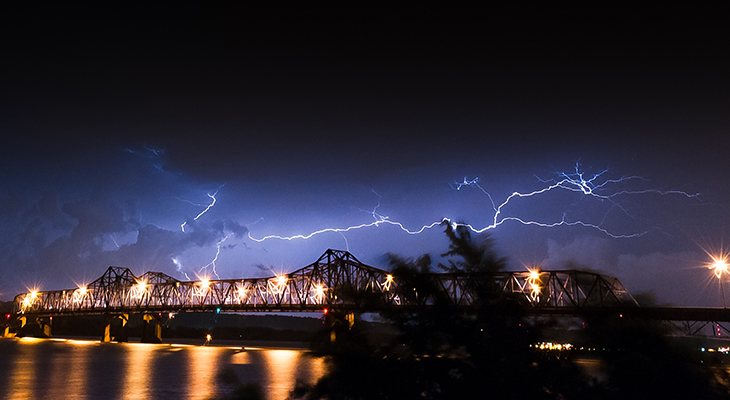Don't Take Chances: Check Your Local Forecast

(Inside Science) -- After working all day and picking up the kids, you remember that you need to buy toilet paper. As you pull into the store parking lot, it starts raining. You hear the rumble of thunder overhead and see a flash of lightning in the distance. Do you stay in your car and wait for the storm to pass, or do you reach for your umbrella and risk getting wet or worse?
The answer might be in your pocket or purse. Technology is pushing the boundaries of localized "on-demand" weather forecasts to your phone, helping users know what is happening overhead whether they are outside or inside.
For the students and coaches at baseball practice on April 29, 2014, at Estero High School in Florida, being notified that lightning was in the area proved to be a lifesaver.
"The skies were clear overhead, and the team was practicing inside the metal batting cages," said Pete Bohatch, director of student services and Lee County athletic director.
The Germantown, Maryland-based Earth Networks' Total Lightning Network detected a lightning strike within a 10-mile radius of the school, which triggered Earth Networks' WeatherBug app to alert mobile phone users and sound the outside alarm in this area.
"When the horn went off, the students thought it was a false alarm, but the coach took it seriously and made everyone go inside," said Bohatch. "A few minutes later lightning struck the batting cages, killing a bird."
Without this localized information and someone who paid attention to it and taking action, this story could have had a very different ending.
"I respect lightning," said Bohatch. "You can't put a price on a student's life."
The National Weather Service did not broadcast a severe thunderstorm watch or warning for this area because this was a localized event. Having localized weather information is like having your local broadcast meteorologist in your backyard telling you the weather forecast versus having a meteorologist hovering over your entire city in a plane and reporting conditions from that vantage point. The level of detail in the amount of information that they can obtain is different. Through the use of the Total Lightning Network data, WeatherBug's meteorologists are working jointly with the weather service to explore ways that their data can be used to provide advanced warning of localized severe weather events such as lightning, hail or tornadoes.
This week is National Lightning Safety Awareness Week and according to the weather service, nine people have died in the United States in 2015 because of lightning strikes. The majority of the occurrences happened within the last month.
People often think that once the storm passes, it is safe to go back outside.
"People take chances because they think lightning storms are further away than they are and end up putting themselves in potential dangerous or deadly situations," said John Jensenius, a meteorologist at the weather service's Portland, Maine office.
"You need to wait 30 minutes after the storm has passed and the thunder has ended before venturing outside, because you can still be struck by lightning after the storm has moved miles away," said Jensenius. "I see this quite a bit where people thought the storm had passed, and they were struck going to their car."
Being aware of the conditions during changing weather conditions is an essential part of being safe in severe weather. Meteorologists are developing ways to provide early warnings to the public, especially in situations where people are outside and won't hear a radio or television announcement. Weather apps, such as those now available from The Weather Channel and many local television stations are one method. The WeatherBug app has a Spark Lightning Alert. When lightning strikes, this feature reports how far away the last lightning strike was from the phone. This was the feature that alerted the coach at Estero High School. The data used to generate this information comes from a network of lightning detection sensors.
Each lightning detection sensor is part of a weather station that measures temperature, humidity and wind speed. The Total Lightning Network is comprised of close to 1,000 sensors in the United States and over 800 additional sensors around the world. The network uses multiple sensors to identify and hone in on the exact location of lightning strikes.
"[The sensors] 'talk' to each other and relay lightning detection information." said Frank McCathran, director of enterprise solutions at WeatherBug. "This helps with precision and redundancy to provide localized information.
"We want to be able to measure the energy inside a cloud and be able to inform and warn users if this is lightning, hail or a tornado," said McCathran. "We want to be able to alert people no matter where they are and what they are doing."

